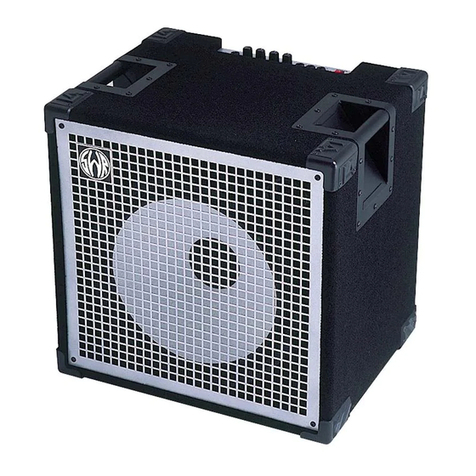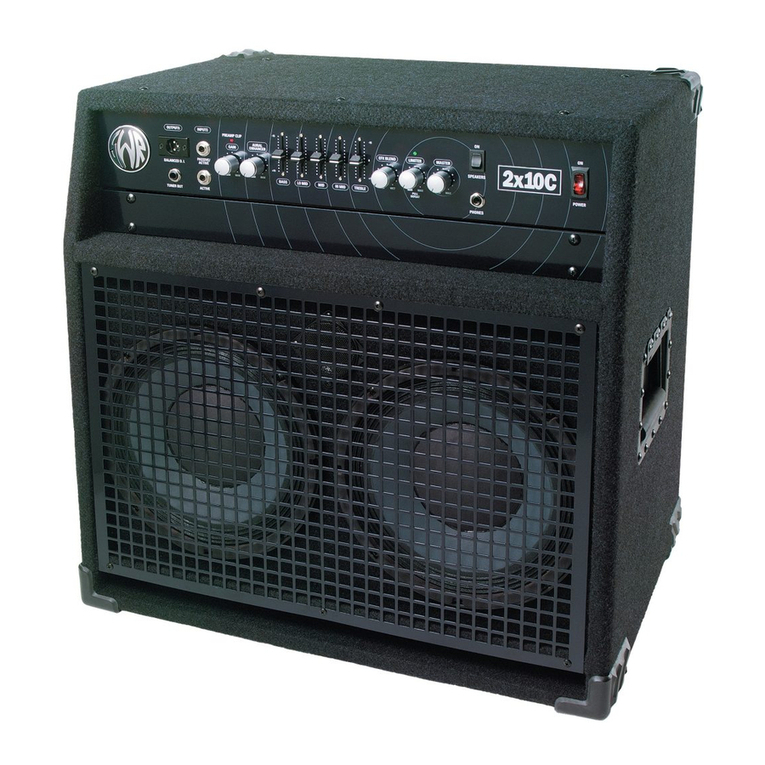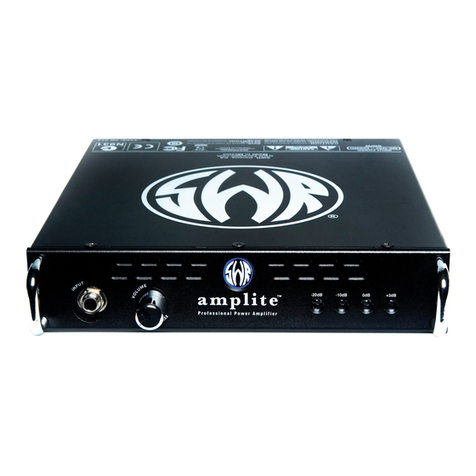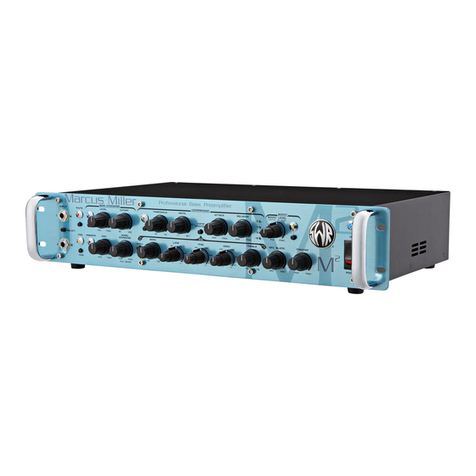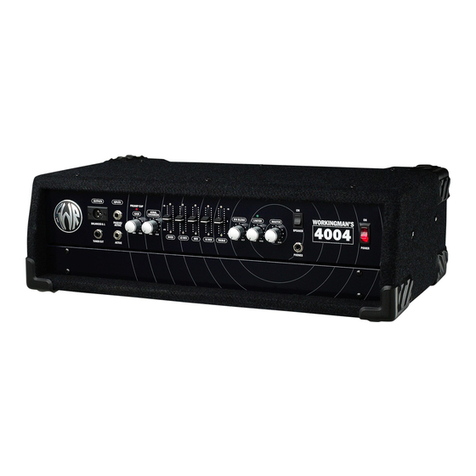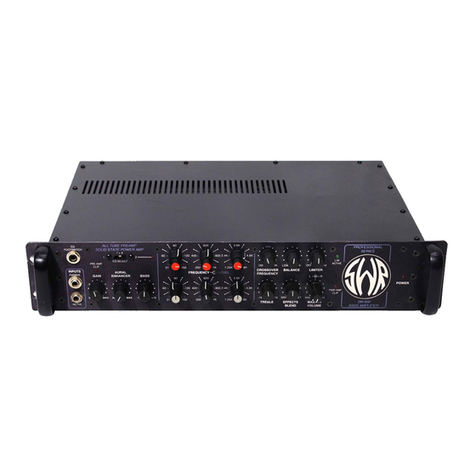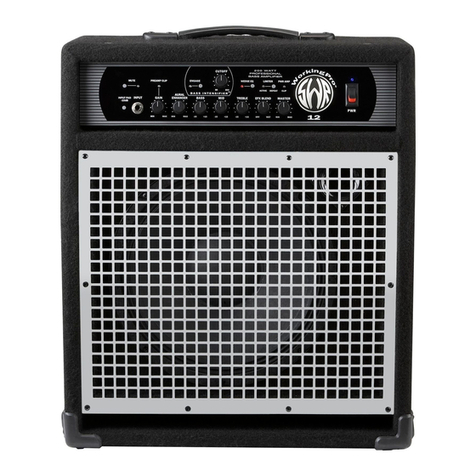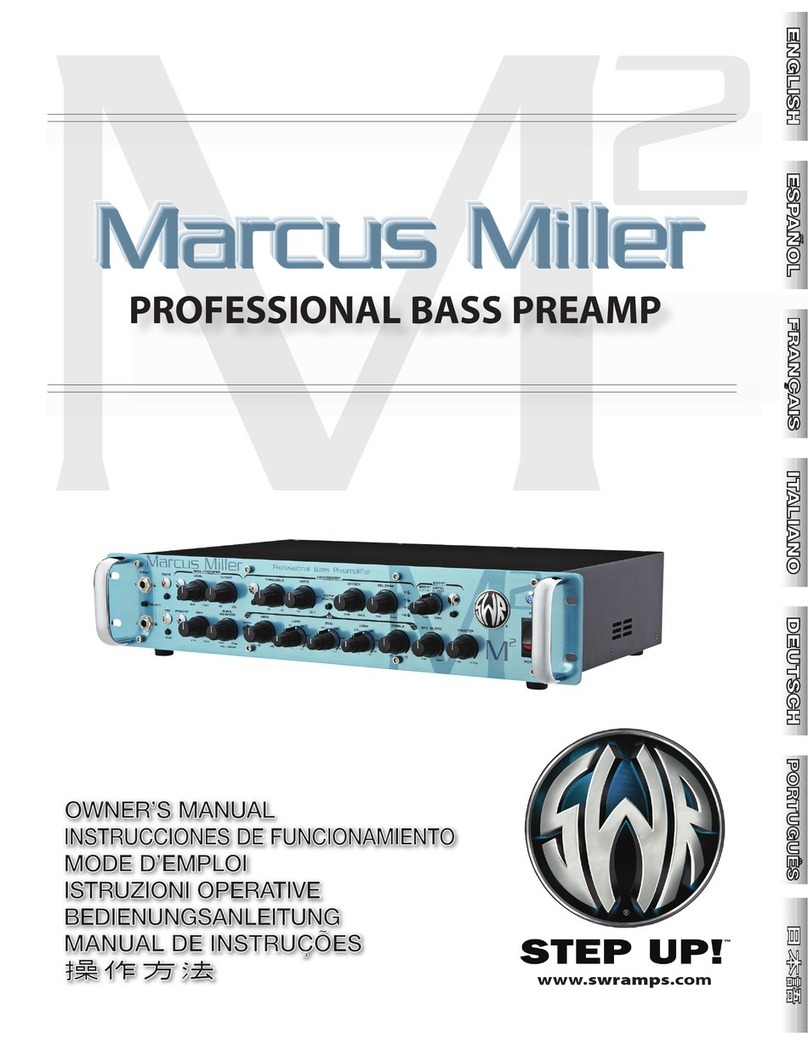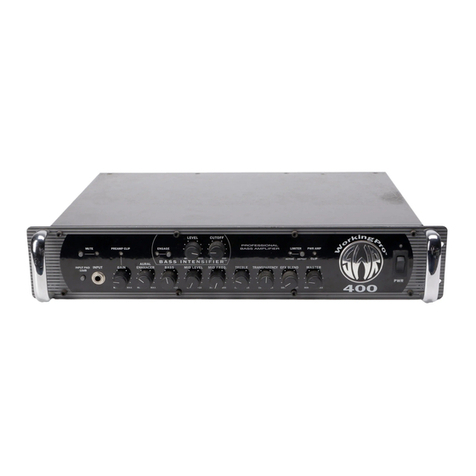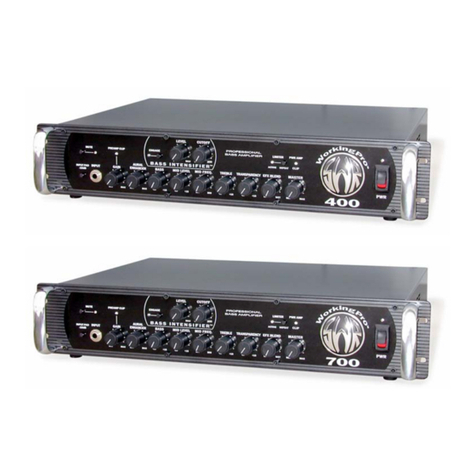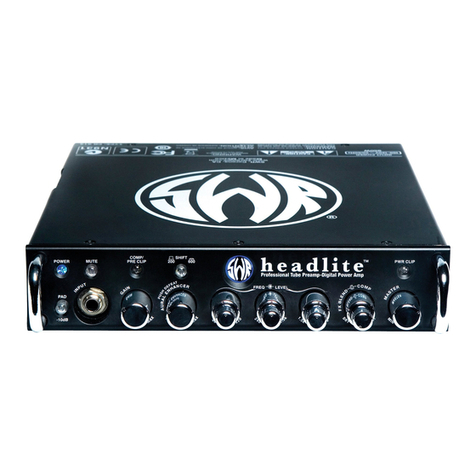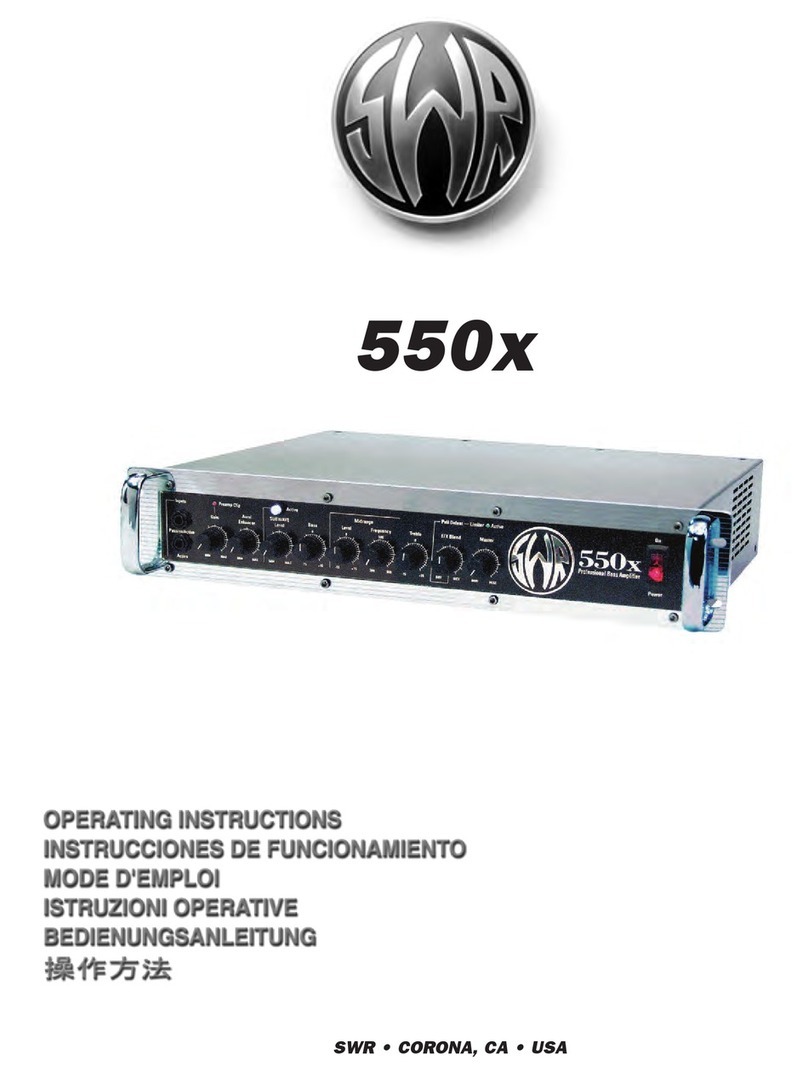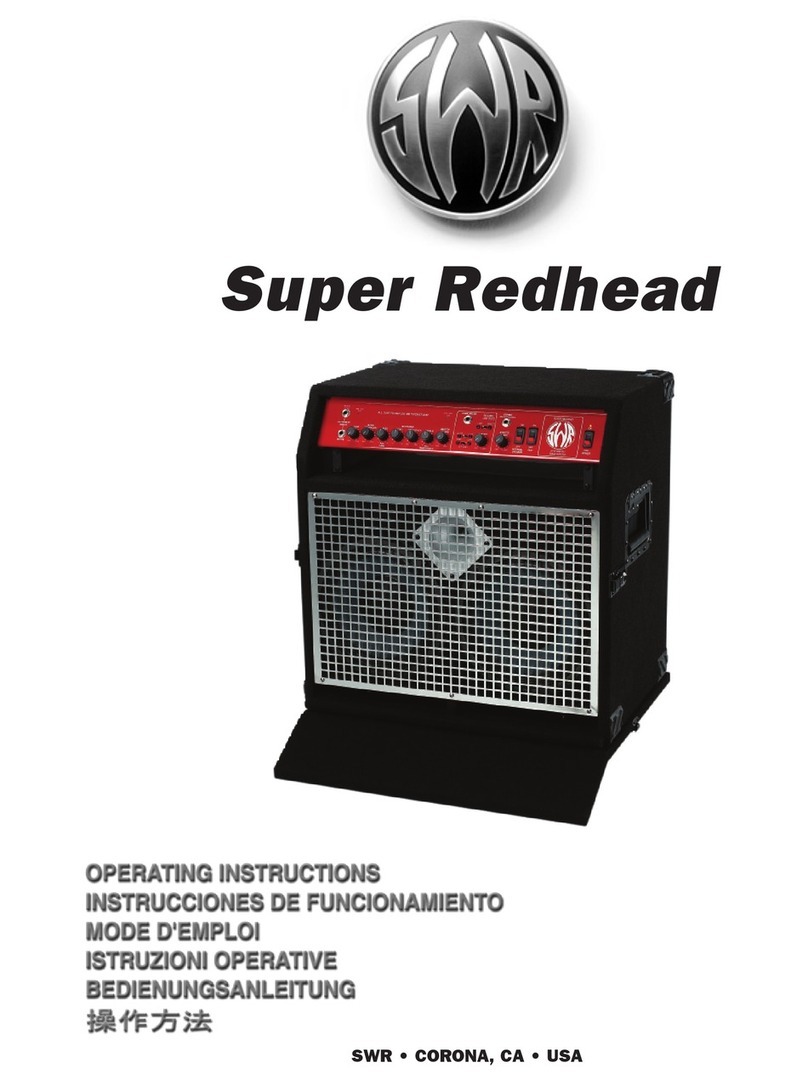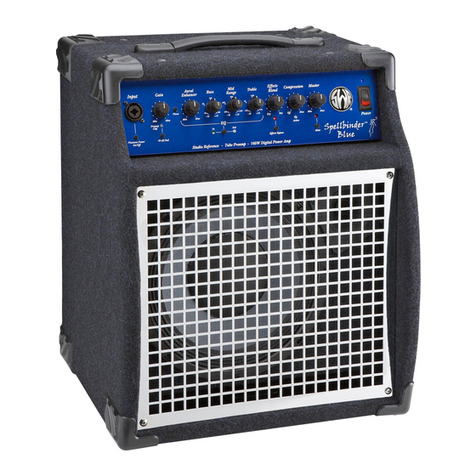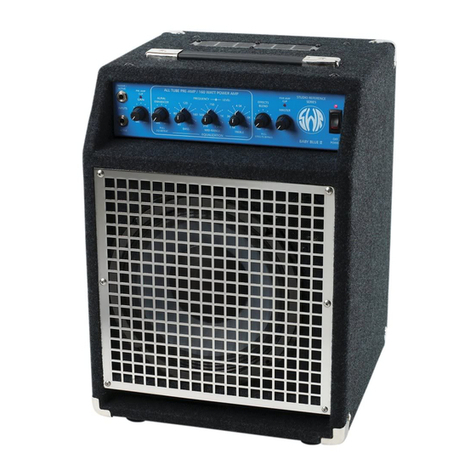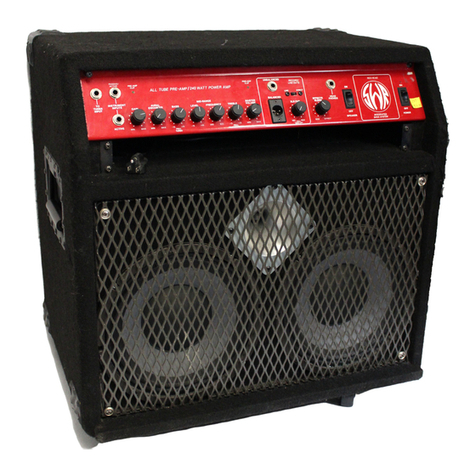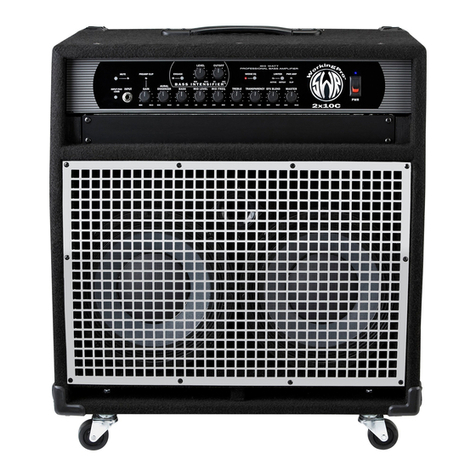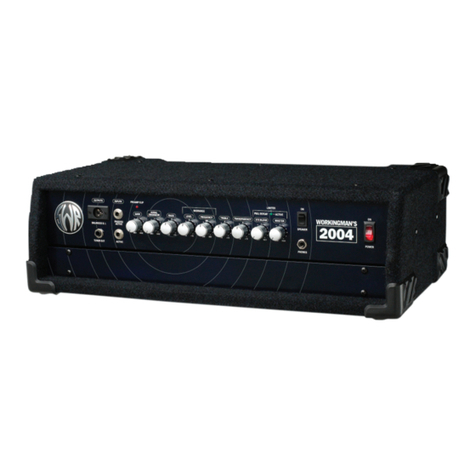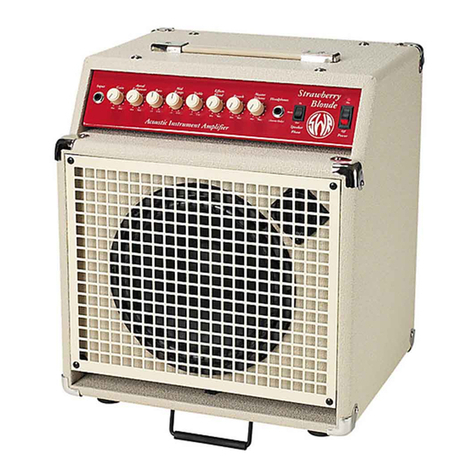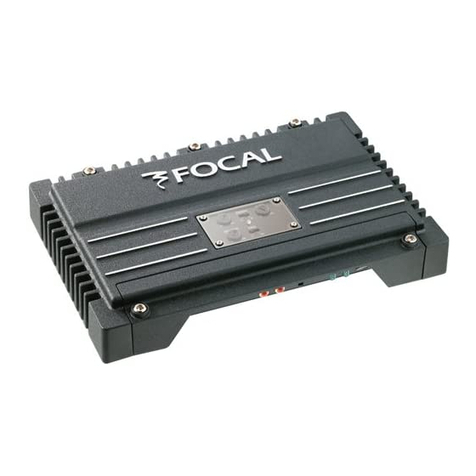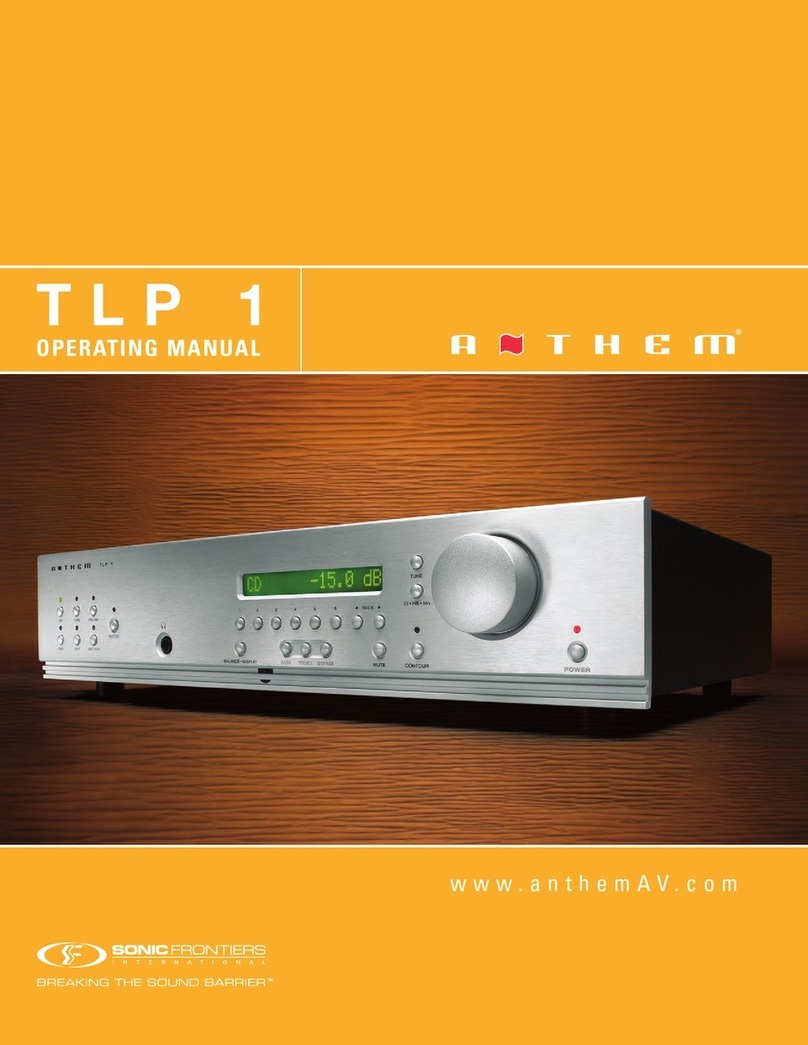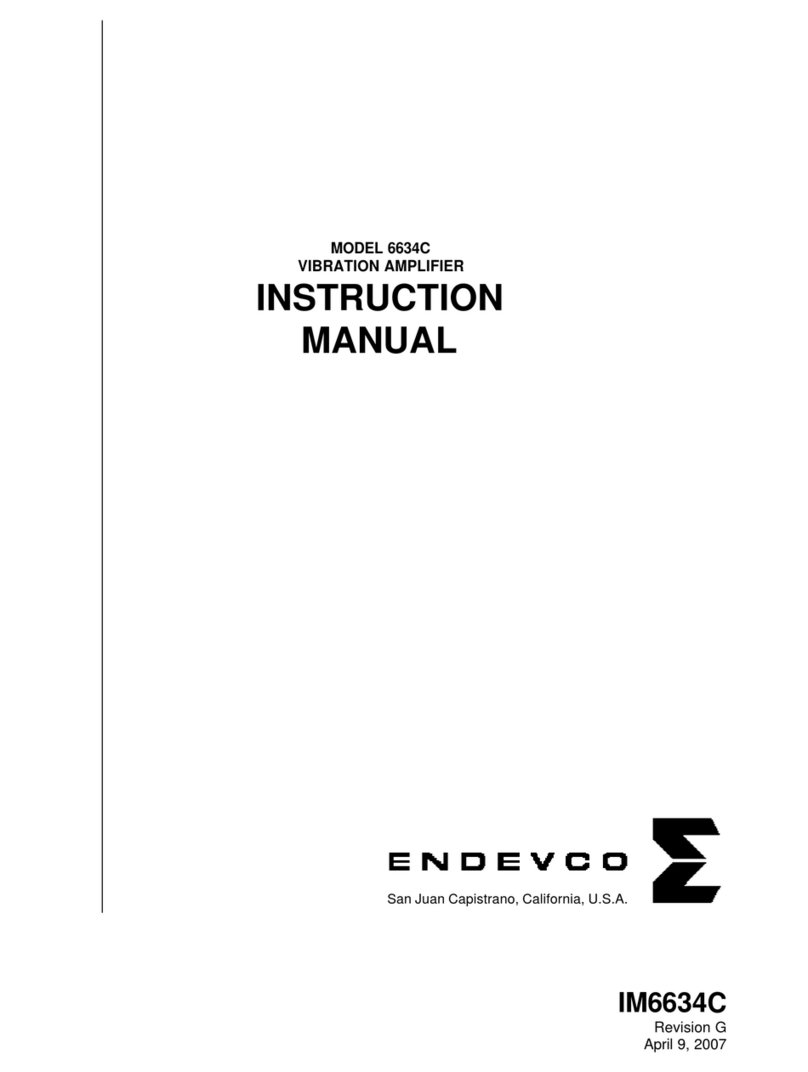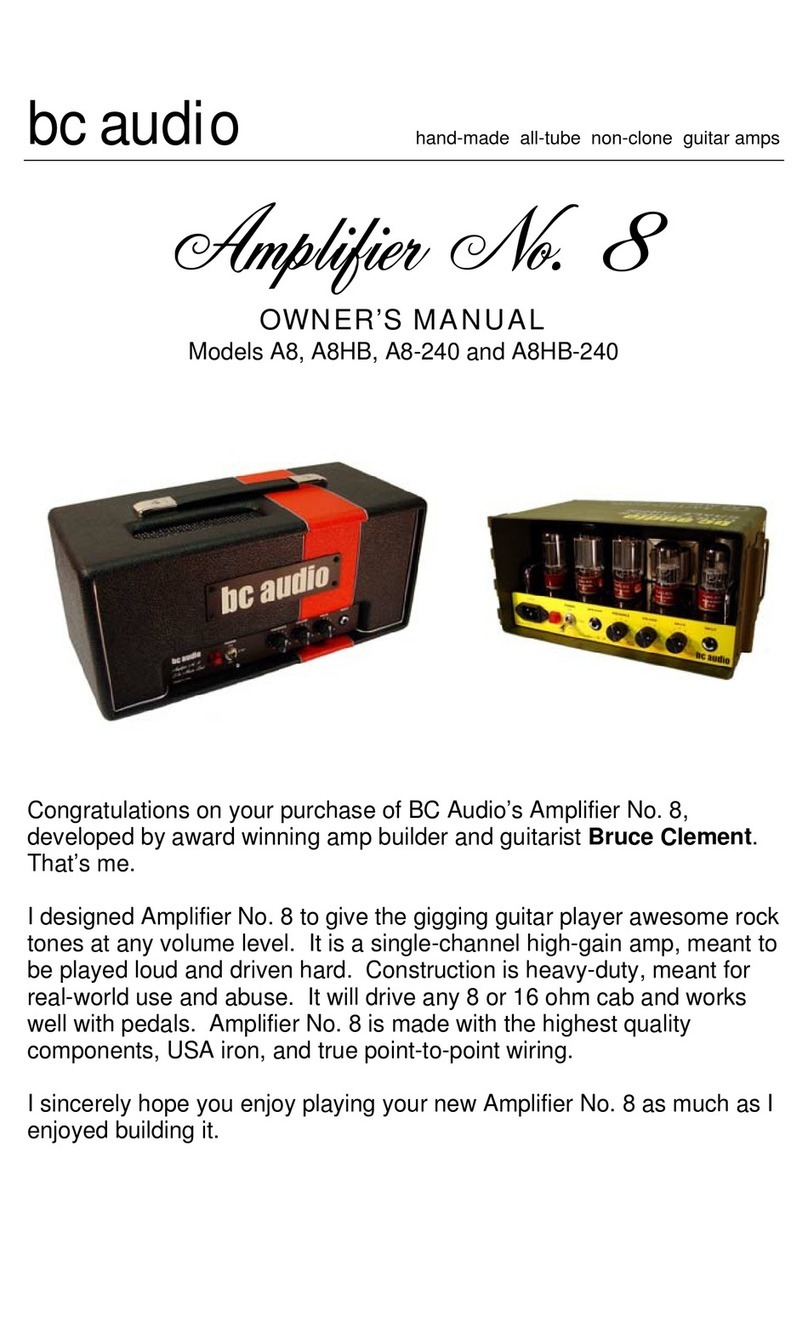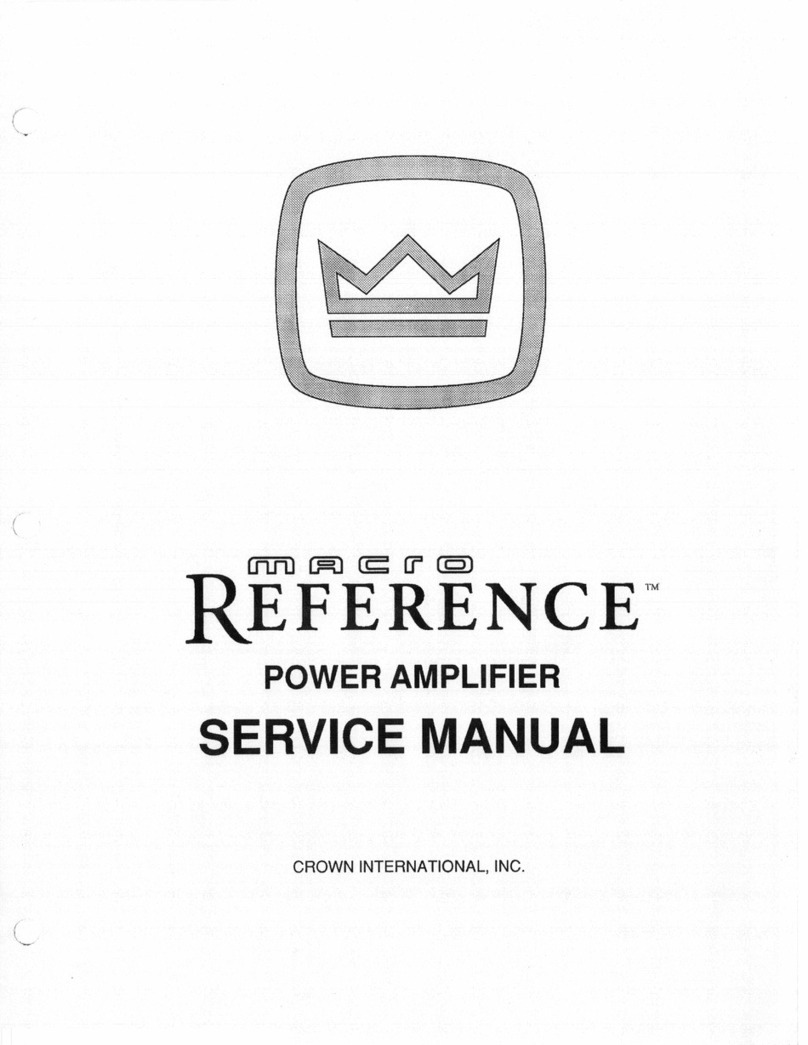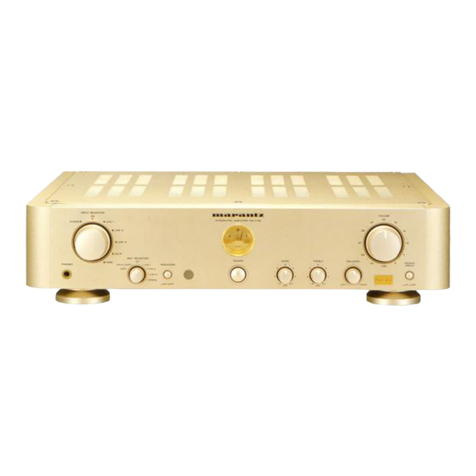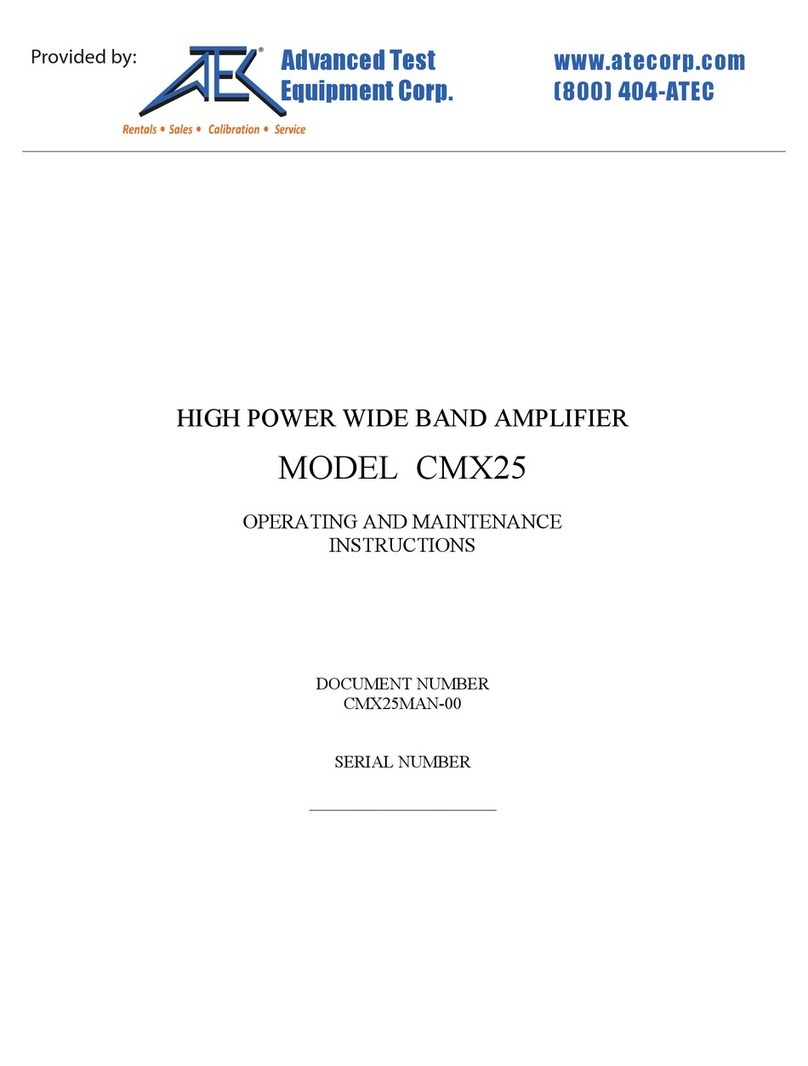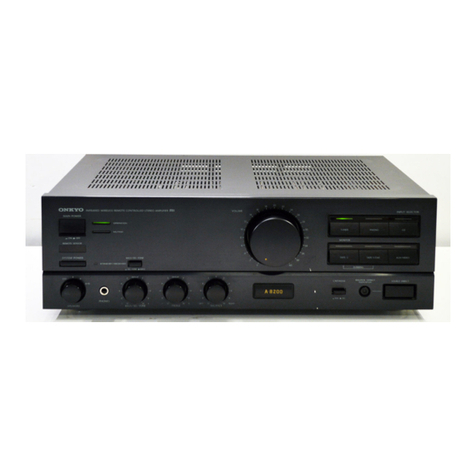WORKINGMAN’S 2X10C • 11
NOTE: Inserting a plug into the Effects Receive jack activates the Effects Blend control. The control receives this command
through the ground created by the phone plug making contact ith the jack. The plug must be a mono plug (tip and ground). If you
have a stereo plug only, it ill be necessary to tie the ring and the ground together.
COMBO CABINET JACK/PLUG ASSEMBLY
The black cable/plug assembly that comes out of the cabinet and is connected to the rear panel (near the text marked "Combo
Cabinet") is the means by hich the po er amp in your Workingman's 2x10C sends its signal to the speaker complement. Both the
plug and the jack it connects to are a special size, slightly less than the typical 1/4" found on instrument and speaker cables alike.
SWR strongly recommends that you not disconnect this cable, as it is not meant to be (nor can it be) used as either an extension
speaker output or a speaker cabinet input. For proper connection of an extension speaker to your Workingman's 2x10C, please read
belo .
EXTENSION SPEAKER OUTPUT SECTION
This section of the manual ill deal ith the proper connection of extension speaker cabinets to the po er amplifier in the
Workingman's 2x10C. We recommend that you read this section carefully, as po er amplifiers, impedance and speaker cabinets are
all crucial in determining ho best to operate your ne Workingman's 2x10C ith an extension speaker cabinet.
HOW IMPEDANCE AFFECTS POWER RATINGS
People often have questions about impedance. What is it? The root of the ord "impedance" is the verb "impede," hich means to
block or resist. That's hat impedance is −resistance to po er.
Solid-state po er amps do not have a pre-determined impedance. They deliver po er at hatever impedance the speaker cabinet
tells it to. That's hy you hear the term "slave amp" −amplifiers only do hat they're told. So if someone tells you that they have a "4
ohm po er amp," their terminology and understanding of the concept is ay off the mark.
Unlike po er amps, every speaker cabinet has a pre-determined impedance rating measured in "ohms." In most cases this rating is
either 4 or 8 ohms (though there may still be some old 2 ohm creakers out there). The higher the impedance of the speaker cabinet,
the more resistance to po er it ill offer. The lo er the resistance of the speaker cabinet, the less resistance to po er it ill offer. In
other ords, HIGHER IMPEDANCE MEANS LESS POWER CAN ENTER THE SPEAKER CABINET. LOWER IMPEDANCE MEANS MORE
POWER CAN ENTER THE SPEAKER CABINET.
You may be thinking that you've found the solution to the universe −just use speaker cabinets ith really lo impedances and you
can get skull-crushing po er out of your amplifier, right? Wrong. There's a catch. Po er amps have limits as to ho lo an impedance
they can drive safely. This is hat's kno n as an amplifier's "Minimum Impedance Rating." If you try and operate a po er amp belo
its minimum impedance rating, it ill give you lots and lots of po er for about five minutes…and then overheat, short out and fail com-
pletely. In other ords, THE LOWER THE OPERATING IMPEDANCE OF THE AMPLIFIER, THE HOTTER IT WILL GET.
WORKINGMAN'S 2X10C POWER AMPLIFIER MINIMUM IMPEDANCE RATINGS
Here's hat this means to the po er amp in the Workingman's 2x10C. Like most combos, the Workingman's 2x10C contains a mono
po er amp, hich makes things fairly simple. The operating impedance of the internal speaker system in your
Workingman's 2x1 C is 8 ohms, so that's your starting point. When you add an extension cabinet to the Workingman's 2x10C,
invariably the total operating impedance of the amplifier ill get lo er. The Minimum Impedance Rating of the Workingman's
2x1 C is 4 ohms. This means that you can safely connect to the extension speaker jack:
- One 8 ohm speaker enclosure (4 ohms total impedance)
- T o 16 ohm speaker enclosures (4 ohms total impedance)
Operation at 4 ohms ill provide 400 atts, a nice increase over the 260 atts available hen used in a stand-alone configuration.
But as previously mentioned, the lo er the operating impedance, the hotter the amplifier ill run. An amp that runs at or near its mini-
mum impedance all the time may ear the life of its components faster than normal. Furthermore, damage to the po er amplifier
















